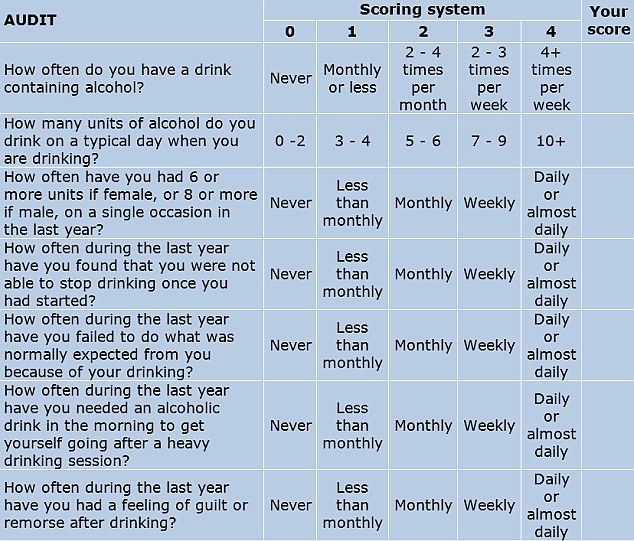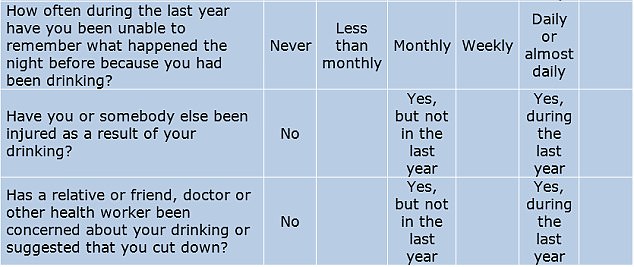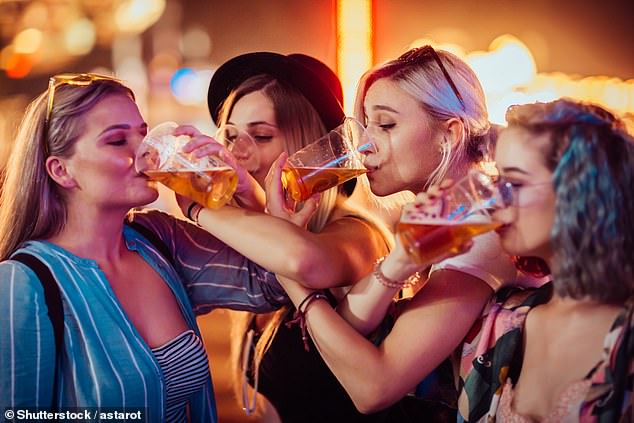
Alcohol should be sold in plain packaging or be plastered with cigarette-style health warnings, campaigners say.
It comes after a study suggested uniform branding — mirroring how tobacco is sold — would be less appealing.
Stirling University researchers believe doing so would help cut drinking rates.
They warned attractive colours adorned on bottles of beer, wine and spirits could be dulling important medical warnings.
The authors say their findings provide ‘pause for thought’ on ‘unrestricted’ alcohol boxes and wrappers.
Alison Douglas, chief executive of Alcohol Focus Scotland — the charity that funded the study, called for immediate action.
She said: ‘Mandating health warnings on alcohol products would help to counter the attractiveness of packaging and address current low levels of knowledge of alcohol harm.’
But industry groups have hit back, saying making packaging appealing was common across all forms of marketing.

Researchers from the University of Scotland said findings on alcohol marketing and young people provide ‘pause for thought’ on why there are unrestricted designs in alcohol packaging compared to those for cigarettes (stock image)
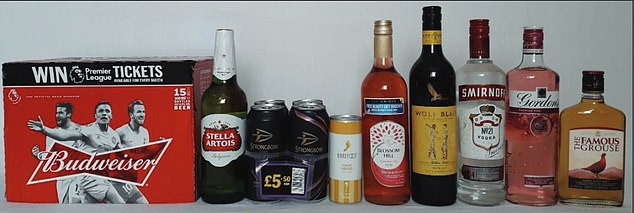



In the study 50 young Scots participated in focus groups where they shared their thoughts with researchers on the pictured alcoholic drinks
The study looked at whether young drinkers were influenced by the packaging when it came to deciding which alcoholic beverage to buy.
It found some of the 50 young Scotts bought drinks based on seeing colourful, attractive or memorable packaging.
Others opted for small packs for ease of drinking on public transport or concealing it from police, according to the study in the Journal for Studies on Alcohol and Drugs.
Some participants reported downing 80 units per week — equivalent to roughly six pints of low strength beer, or 11 shots of spirits per day.
NHS recommendations say adults should not drink more than 14 units each week.
Volunteers were presented with a range of alcoholic beverages sold in Britain, such as beer Stella Artois, vodka brand Smirnoff, and Gordon’s gin.
One young man said: ‘I don’t actually like beer, but I bought it [Brewdog] specifically because I liked the packaging.’
Another male said: ‘Colour is what attracts people, it’s all about colours.’
One female respondent said she preferred small packs of slim cans of wine like Barefoot as they ‘quick, easy, grab and go’ and therefore were easier to consume in public settings like trains whist avoiding attention from police.
Others reported keeping old bottles of ‘cool’, unusual, or expensive alcoholic drinks like Hendrick’s Gin or Crystal Head Vodka.
Lead researcher Daniel Jones said: ‘Alcohol packaging can capture attention, create appeal, and help shape perceptions of the product, drinker and drinking experience.
‘Our findings may help to inform future research and policies.
‘Including prominent warnings on packs could reduce appeal, increase awareness of alcohol-related risks, and support a decrease in consumption.’
Since 2016, all tobacco products in the UK have had to be sold in drab, standardised packaging after health groups campaigned for the change.
Matt Lambert, chief executive of Britain’s alcohol marketing regulator, argued the study’s findings were unsurprising.
‘This study demonstrates that the packaging of a product is designed to appeal to different audiences something that would ring true across all forms of marketing and is not in itself a surprise,’ he said.
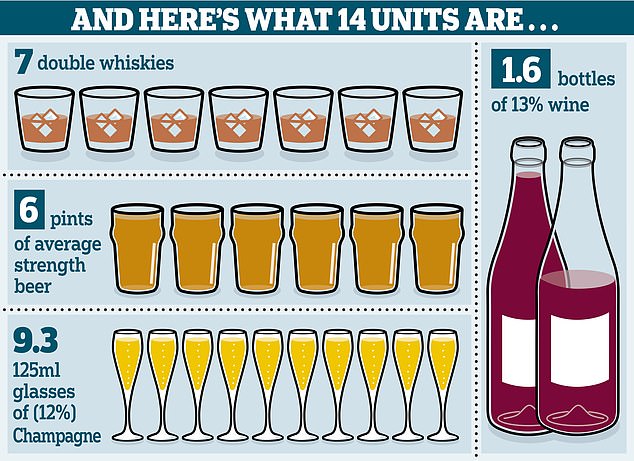





The NHS recommends that adults drink no more than 14 units each week — that’s 14 single shots of spirit or six pints of beer or a bottle and a half of wine
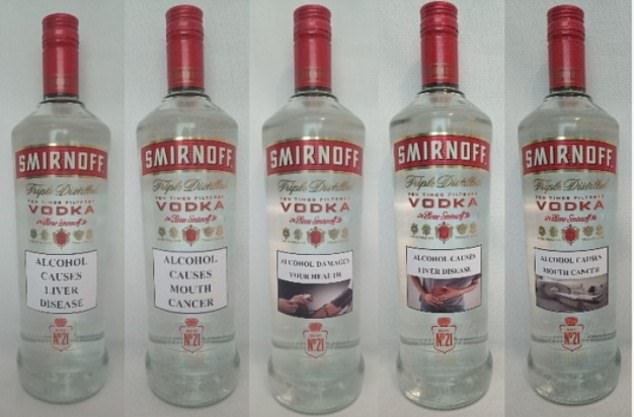





Stirling scientists have previously proposed cigarette style warnings on alcohol products producing these mock-ups in a study in February this year






And this is the type of chocolate bar packing scientists say could reduce desire for chocolates as a possible way to reduce obesity
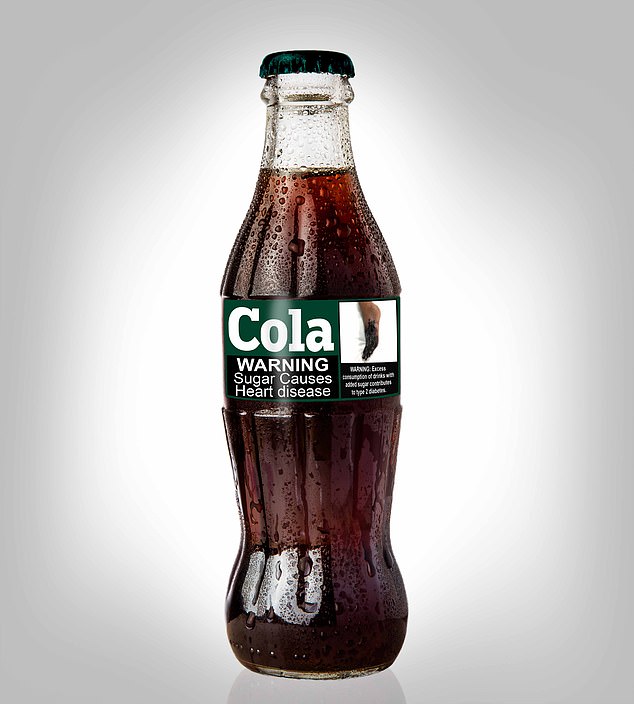





Other scientists have proposed cigarettes style health warnings on a number of products to tackle obesity, including drinks high in sugar. Pictured here is a mock-up of what a warning label about the health risks of sugar on a soft drink could look like
He added that the group’s code of practice ensures alcohol is not marketed inappropriately and highlighted how adherence to the code had contributed to ‘over a decade of decline in underage drinking in Scotland.’
Alcoholic drinks in the UK only legally need to include their alcohol percentage by volume, total volume, and country of origin on the label.
However, many also include how many units of alcohol is contained in the drink as well as a general warning that pregnant women should not consume then.
Alcohol-related harm is estimated to cost the NHS £3.5billion per year in England alone, and 8nearly 9,000 booze-related deaths were logged in the UK in 2020.
There is an increasing movement to expand cigarettes style graphic health warning packaging to variety of products such as alcohol and chocolate bars.
MailOnline revealed yesterday that experts were suggesting cigarette-style warnings on the nation’s favourite chocolate bars could help tackle obesity.
In February this year, experts from Stirling found similar warnings on vodka bottles which included phrases like ‘alcohol causes mouth cancer’, as well as images of people clutching their liver as if in pain discouraged drinking.
In tests on 1,300 young Britons, those who viewed the warnings were less likely to find alcohol appealing and more likely to think about the health risks.
Source: | This article originally belongs to Dailymail.co.uk
